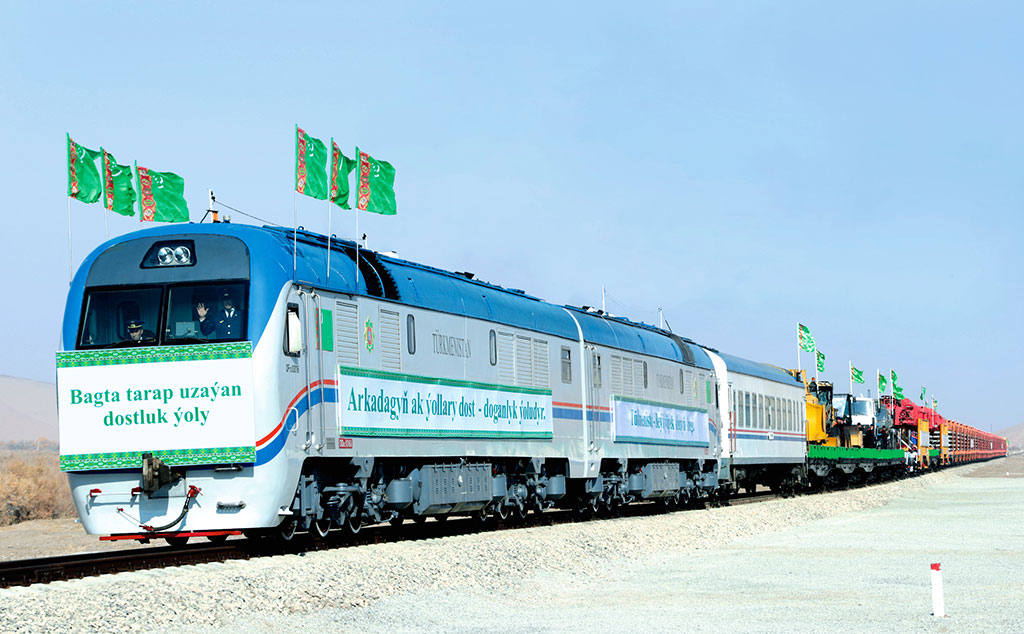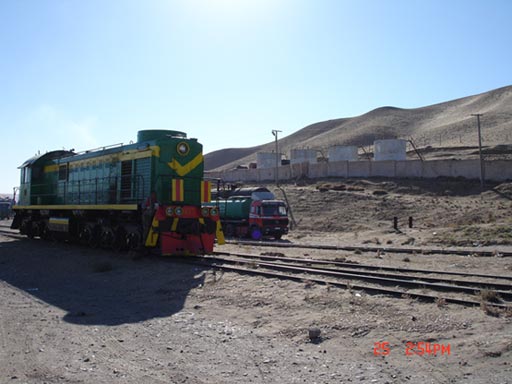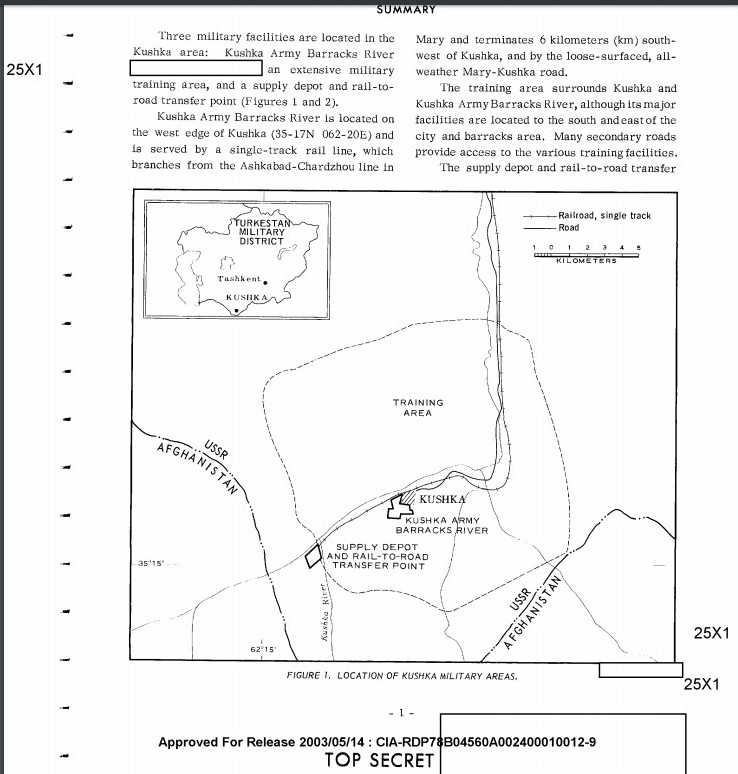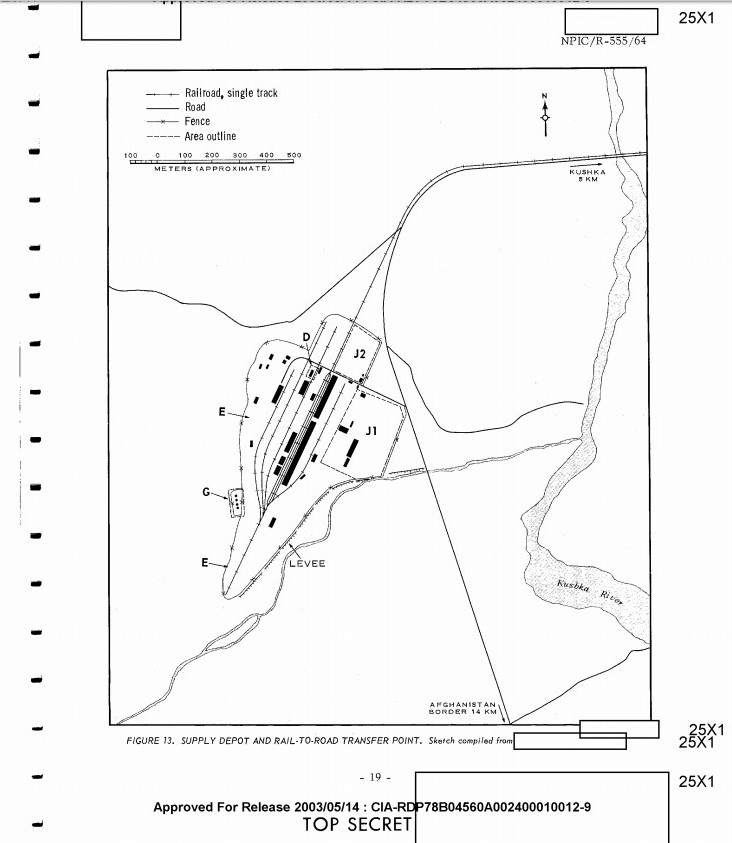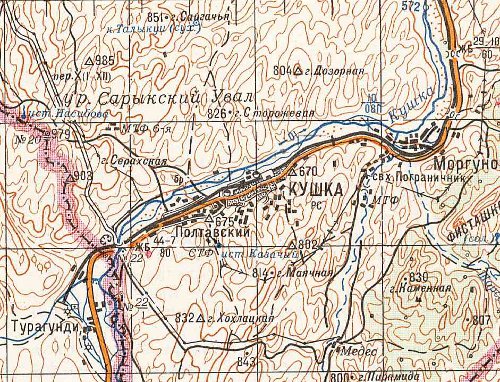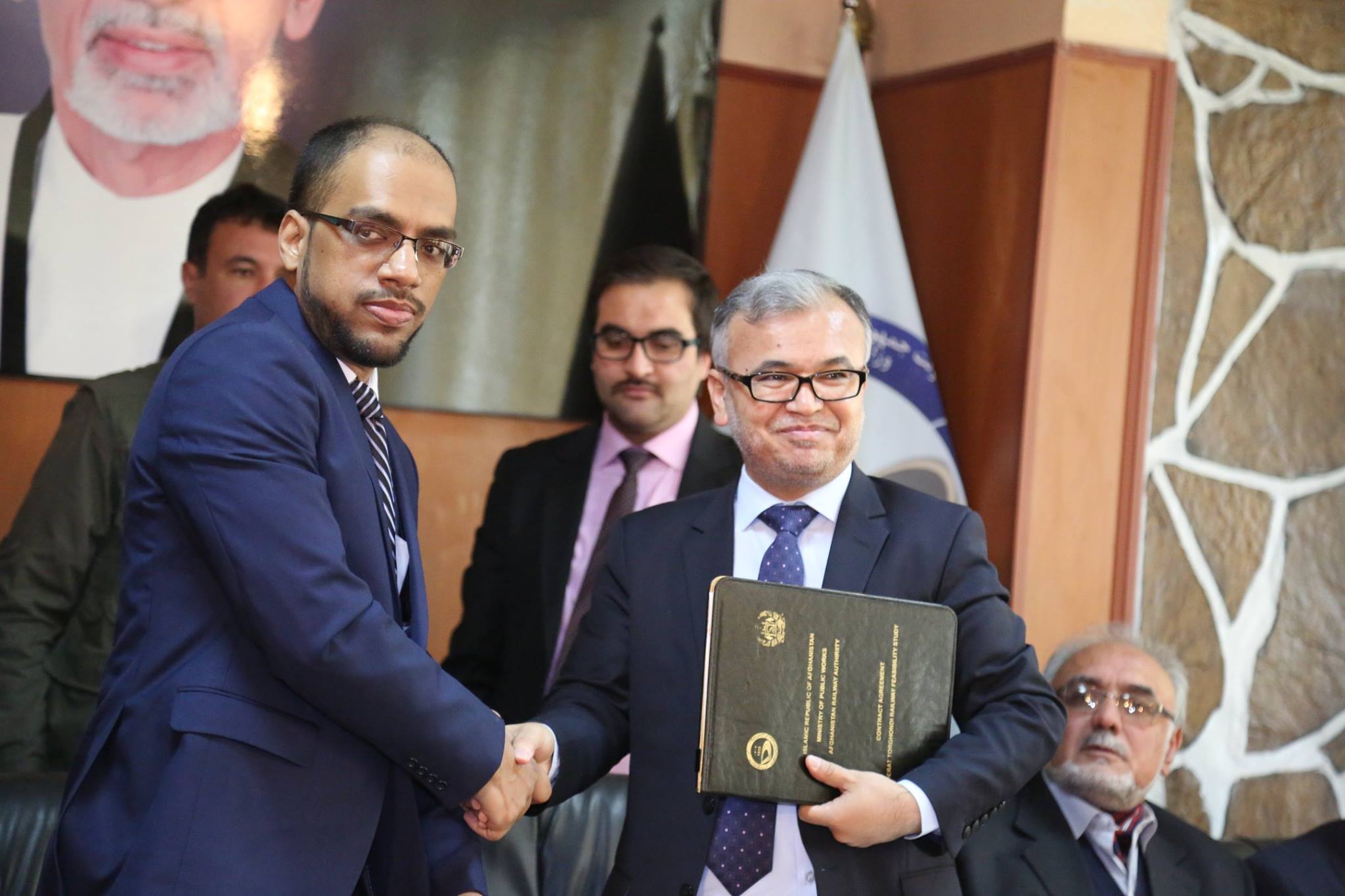The short rail link from Serhertabat in Turkmenistan to Torghundi in Afghanistan has a much lower profile than the railway from Uzbekistan, presumably because of its back-of-beyond location and the general inaccessibility of Turkmenistan.
But it would appear that this was the first main line railway into Afghanistan. So when did it open? Presumably news from a remote border of the Soviet Union wasn’t plentiful at the time it did open, and modern mentions of the railway take a vague guess at little more the Soviet era, but can it be pinned down more accurately?
It certainly predates the Friendship Bridge line from Uzbekistan:
A provincial Soviet newspaper reported in November that work was under way on the “seventh span” of a road-and-rail bridge between the Soviet and Afghan banks of the Amu Darya. “It is planned to open traffic on the new bridge in May 1982,” the report said.
[…]
The railway station at Towraghondi, on Afghanistan’s northwest border with the Soviet Union, is being rebuilt with Soviet help.
Source: Soviets’ second front in Afghanistan, Ned Temko, Staff correspondent of The Christian Science Monitor 4 December 1981
It seems the railway appears in a Russian Central Studio of Documentary Films production about Soviet assistance to Afghanistan, “Over the Highest Mountains” (Выше самых высоких гор). The Net Film webpage says the film is from 1960, but it includes “Khrushchev’s stay in Afghanistan (March, 1961.)”, so something isn’t quite right.
UPDATE: Khrushchev’s visit was in March 1960, his first visit to Afghanistan since 1955.
This is a section of the English description, with the Russian words interspersed where the translation is a bit odd:
Reel 2
Description
Prime Minister of Afghanistan – Mohammed Daoud Khan has arrived in Turgundi station [станцию] to meet one of the first waggonages [составов, Google Translate of the Russian text says “trains”] which has arrived from the USSR.
A waggonage with vehicles, machines, road machinery is moving along a new railway road.
The road machinery designated for construction of Kushka-Terat-Kandahar highway, is being reloaded from platforms [платформ – flat wagon] to lorries.
A panorama of the reloading station – Turgundi.
Source: Over the Highest Mountains, Net Film
UPDATE: The text seems to have changed since I drafted the above post, and now says:
Delivery of goods from the Soviet Union in Afghanistan, a new overland – by rail, going across the border to the border of the village Turgundi – the general plan.
Part of the railway – the average plan.
Composition is the engineer Ivanov.
Trains with goods in transit.
Source: Over the Highest Mountains, Net Film
Mohammed Daoud Khan was Prime Minister from 7 September 1953 to 10 March 1963, which suggests the railway opened at some point 1953-1960.
Транспортная блокада Афганистана is a Russian language article dated 20 May 2011, which says (thanks to Google Translate and a bit of guesswork) that the line was “built to facilitate the delivery of equipment and materials in the construction of highways Kushka – Herat – Kandahar”.
So if we can work out when the road works were undertaken, we might be able to pin down a date for the railway.
